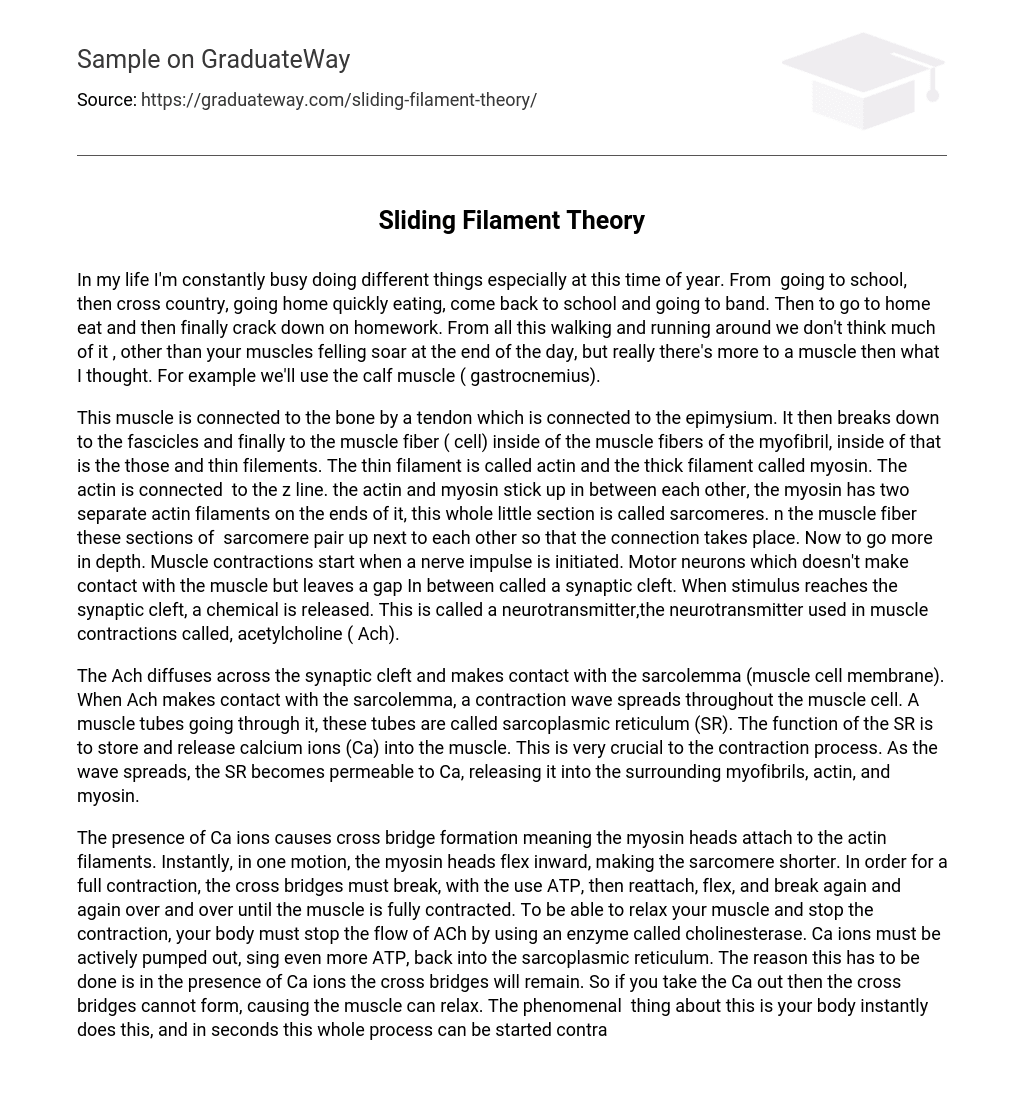Throughout my daily routine, I am constantly engaged in a variety of activities. This is particularly true during the current time of year when my schedule is jam-packed. I attend school, participate in cross country, swiftly eat at home, return to school for band practice, come back home once again for another meal, and ultimately focus on completing my homework. Amidst all the walking and running involved in these activities, we seldom consider the impact they have on our muscles aside from experiencing soreness by the end of the day. However, there is more to a muscle than what meets the eye. Let’s examine the calf muscle (gastrocnemius) as an example.
The muscle is connected to the bone through a tendon and also connected to the epimysium. It further breaks down into fascicles and muscle fibers (cells) inside the myofibril, which contain thin and thick filaments. The thin filament, called actin, is linked to the z line, while the thick filament, myosin, has two separate actin filaments on its ends forming sarcomeres. In the muscle fiber, these sarcomeres are adjacent for connection purposes.
Muscle contractions begin with a nerve impulse that does not directly contact the muscle but instead leaves a gap known as a synaptic cleft. Once the stimulus reaches this synaptic cleft, acetylcholine (Ach), a neurotransmitter, is released.
The Ach diffuses across the synaptic cleft and contacts the sarcolemma, causing a contraction wave to spread throughout the muscle cell. The muscle contains sarcoplasmic reticulum (SR) tubes which store and release calcium ions (Ca) into the muscle. This is vital for the contraction process. As the wave spreads, the SR becomes permeable to Ca, releasing it into the surrounding myofibrils, actin, and myosin.
The presence of calcium ions leads to the formation of cross bridges, with myosin heads attaching to actin filaments. The myosin heads then flex inward, causing the sarcomere to shorten. For a complete contraction, the cross bridges must repeatedly break and reattach, flexing each time until the muscle is fully contracted. To stop the contraction and relax the muscle, the flow of ACh is halted by the enzyme cholinesterase. Calcium ions are actively pumped out of the sarcoplasmic reticulum, requiring ATP, to prevent the formation of cross bridges. By removing calcium ions, the muscle can relax. Remarkably, the body instantly performs these actions, allowing the process to occur within seconds. Whether it’s running, marching, or walking, your body continuously contracts and releases your muscles according to your expectations.





